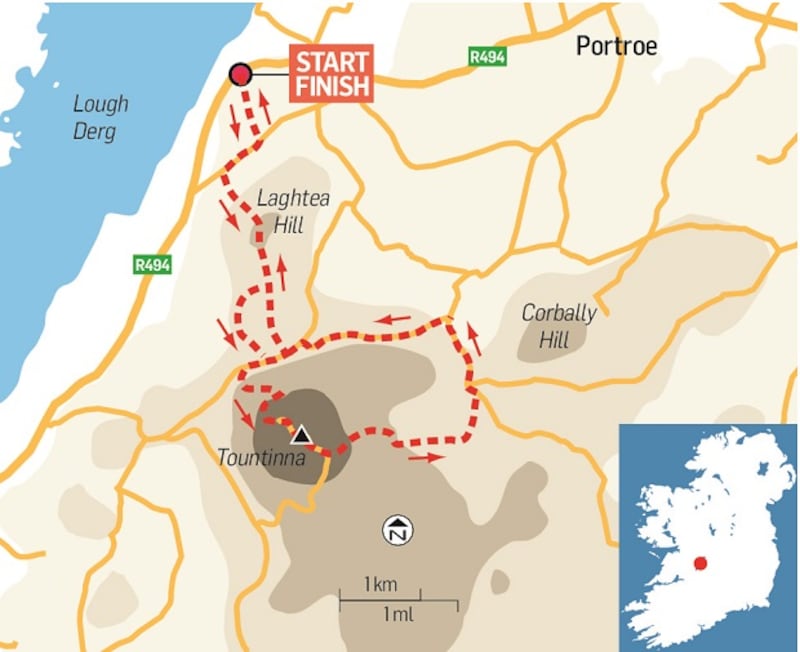First, we had greenways, now we have blueways. Newbies to the Irish outdoors, they don’t always even demand wet feet to experience the treasures of Ireland’s inland waterways.
Unsurprisingly, the Shannon is pre-eminent. Our greatest fresh water resource was once the M1 of Ireland, conveying pilgrim, plunderers and planters into the Irish heartlands. With a series of new blueways, it is now leisure seekers who tag its meandering course.
Latest addition is the Lough Derg Blueway offering "13,000 hectares of clear water; surrounded by beautiful and dramatic countryside". Unable to resist this blurb, I arrive by the Lough Derg shoreline at a viewing point known as "the lookout".

Waymarkers immediately convey me over a rustic landscape to a minor road where arrows point right. With a feeling of regressing in time, I next veer left and upwards on a lane that rambles through a disused quarry – a reminder that these hills were once a commercial hub. Before the sun set on natural slate mining, the industry annually exported 15,000 tons by way of the nearby River Shannon.
Crossing a bridge and following a steepish path, where rudimentary steps have been added, brings me to the summit of Laghtea. Locally known as Cloneybrien, this hilltop bears the remains of a cross that was erected during the huge outpouring of piety surrounding the 1932 Eucharistic Congress. Destroyed by lightning, it was replaced by a Millennium Cross in 2002.
Descending the Lough Derg Way by a path that is initially rough and steep, I reach a road. About 500m right, a conclave of large stones is known as ‘The Graves of the Leinstermen’. This moniker reputedly dates from Brian Boru’s kingship of Munster when he supposedly showed himself to be the ultimate father-in-law from hell: massacring the king of Leinster and his entourage as they travelled to request Brian’s daughter in matrimony. Myths, of course, rearrange facts and this site is actually Bronze Age, thereby pre-dating Brian Boru by about 2,000 years.
A zig-zag path now labours up Tountinna (Hill of the Wave) – named after a biblical flood that reputedly drowned Ireland’s first inhabitants. There was one survivor, however, named Fionntán. Cannily taking refuge on Tountinna, he lived to recount the tale.
Mesmeric views
Huge, micro-link repeater masts dominate the summit, but looking beyond. I am compensated for this intrusion by mesmeric views over the opalescent waters of Lough Derg to the shimmering Clare Hills beyond. Next, the Lough Derg Way leads to a small lake. Here, arrows point left and left again to tag a path skirting forestry. After a few hundred metres, I cross a ditch, right, to enter woodland where a path ambles downhill.
Obeying the arrows, I descend easily with disused slate quarries now industrialising the horizon. Gaining a public road, the arrows draw me along minor byways, past forgotten spoil heaps from the slate industries’ busy past to reach Killoran Quarry.
Tarmacadam now gives way to a rustic path, known as Killoran Lane, that leads to a junction. Taking the left option, I soon after reach a sign declaring ‘Millennium Cross 1,200m’. Now, it is simply a question of retracing your steps over Laghtea and back to the trailhead at The Lookout.
Start: From Nenagh, follow the R494 through Portroe to reach the prominent viewing point known as at 'The Lookout' where there is ample parking. Walk begins here.
Suitability: The route has one steep section but generally it presents few objective dangers or navigational difficulties. Nevertheless, walkers should have good footwear and carry warm clothing.
Time: Five hours.
Distance: 16km
Map: OSi Discovery Sheet 59











